Bumblebees are familiar insects to many of us, with their big fluffy bodies and loud buzzing. The genus name ‘Bombus’ has its origins in Latin, meaning ‘booming’. They belong to the Hymenoptera order, which also includes other bees (honeybees and solitary bees), wasps, ants and sawflies.
Bumblebees can usually be identified to species level by the colour and pattern of their stripes, however some species can look very similar – particularly the cuckoo bumblebees which are parasites and trying to mimic other species.
The 18 social species make nests, lay eggs for worker bees, queen bees and male bees, and collect pollen. The other six cuckoo bumblebee species do not make their own nests, and lay eggs for only queens and males.
Which bumblebees are likely to visit your garden?
There are 24 species of bumblebee found in the UK currently, but only some of them are commonly found in gardens, such as the white-tailed, buff-tailed, common carder, tree, garden and early bumblebees.
You can attract bumblebees to your garden by providing flowering plants that they will feed from. One of my favourite ways to go plant shopping is to wander round a garden centre on a sunny day and look to see what plants the bees, butterflies and other insects are visiting and feeding from, and then to buy some of those. This does result in a bit of a mishmash of plants in the garden. However, if you fancy a bit more planning with your garden layout, you can use this guide to work out which plants you want to buy, either via the links provided or on your next trip to a garden centre.
Visit our wildlife gardening hub for more advice on attracting wildlife to your garden, including how to make a bee hotel, best wildlife gardening books, and how to help hibernating amphibians.
Bumblebee lookalikes
As a rule of thumb, bumblebees can be distinguished from honeybees and most other solitary bees by their larger, furry bodies. However, there are some solitary bees, flies and even a beetle that can be confused with bumblebees, especially if they are flying about and hard to get a good look at:
Hairy-footed flower bee (Anthophora plumipes)
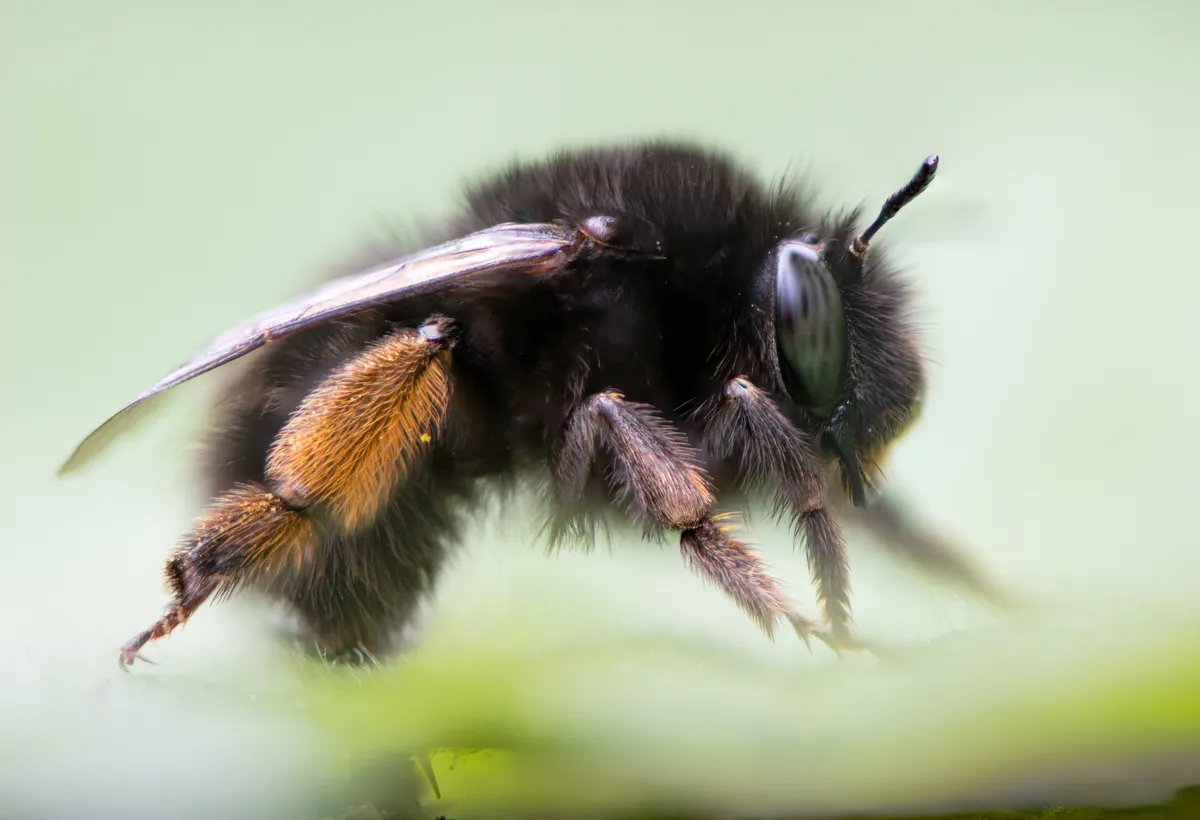
One of our delightful spring bees, the black female hairy-footed flower bee in particular can be mistaken for a bumblebee as she has a large black, fluffy body. A key identification feature are the orange hairs on her hind legs, but if she's busy flying about, then these are very hard to spot!
Dark-edged bee-fly (Bombylius major)

The most common and widespread of the bee-flies in the UK, the dark-edged bee-fly can be mistaken for a bumblebee thanks to its fluffy body and high-pitched buzz. It's not trying to mimic bumblebees, in fact it wants to get close to the nesting sites of ground-nesting solitary bees so it can flick its eggs into the nests. The eggs then hatch and the larvae feed on the bee grubs.
Bumblebee hoverfly (Volucella bombylans)
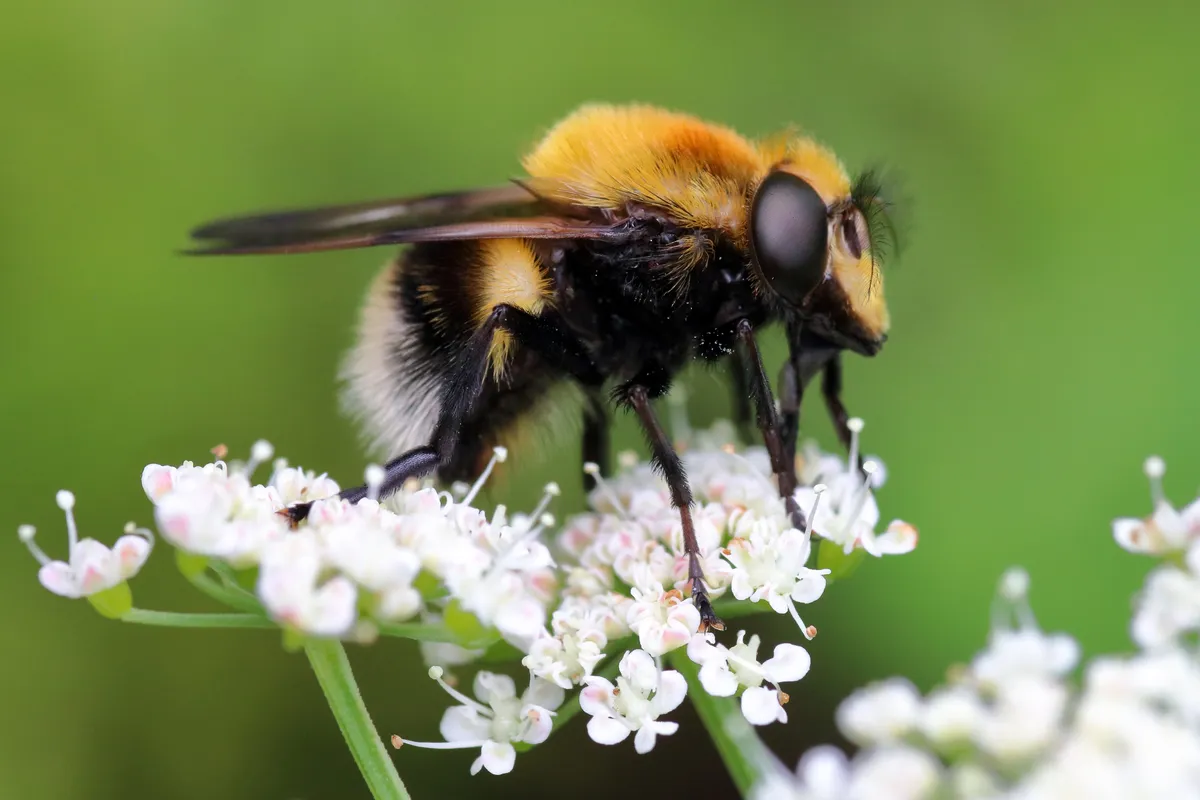
Now this hoverfly species is mimicking bumblebees on purpose – it wants to trick bumblebees into thinking it is one of them, so it can get in close and lay its eggs in the bumblebee (or wasp) nest. The larvae feed on debris in the nest, and sometimes bee larvae. It comes in two colour forms mimicking different species of bumble. Var bombylans is black with a red tail, whilst var. plumata (pictured) is black and yellow with a white tail.
Giant tachinid fly (Tachina grossa)

This large fly has a black hairy body and pale face, and can resemble a bumblebee in flight. The female lays its eggs on other insect larva, usually large hairy Lepidopteran caterpillars such as the oak eggar moth and fox moth. The fly eggs then hatch inside the caterpillar and devour it, killing it.
Eurasian bee beetle (Trichius fasciatus)
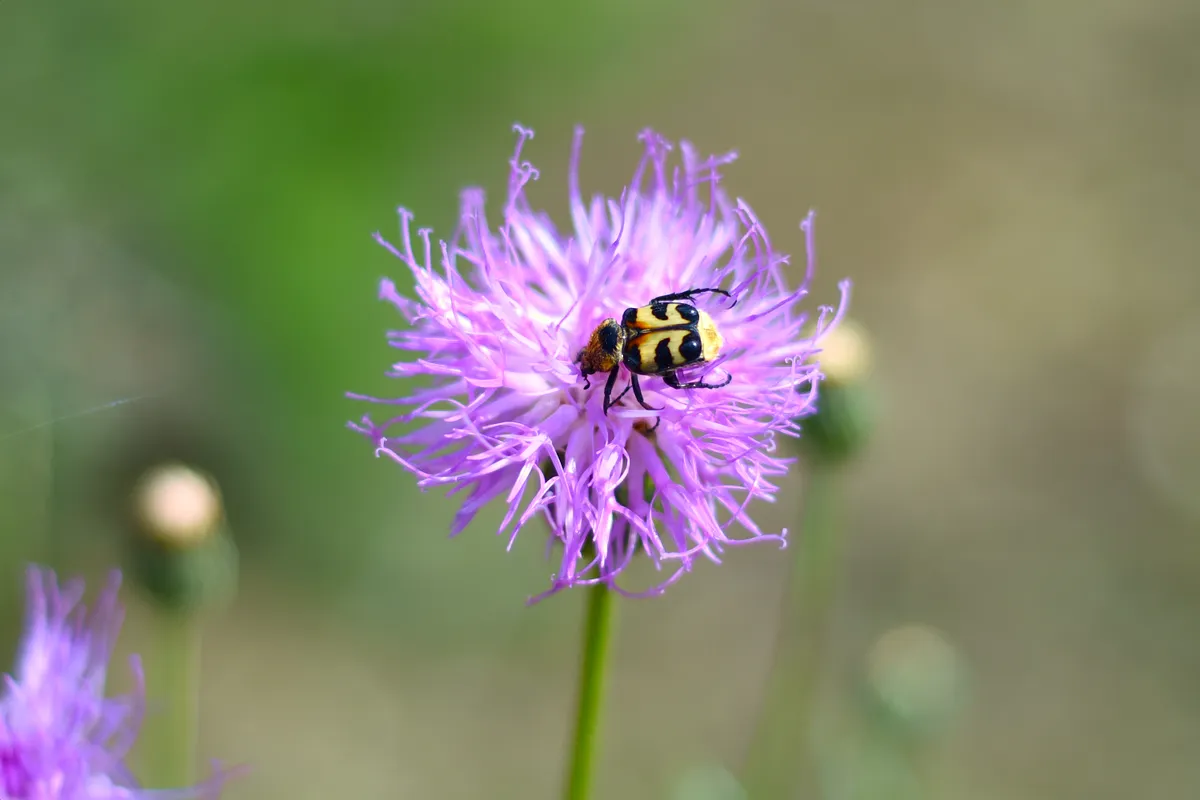
A very well-named beetle species, with its yellow-orange and black stripes that resemble the patterning of a bumblebee. This species belongs to the flower chafers subfamily (Cetoninnae) of the scarab beetles family (Scarabaeidae), which also includes noble chafer beetles and rose chafer beetles.
Best plants for bumblebees
Common foxglove (Digitalis purpurea)
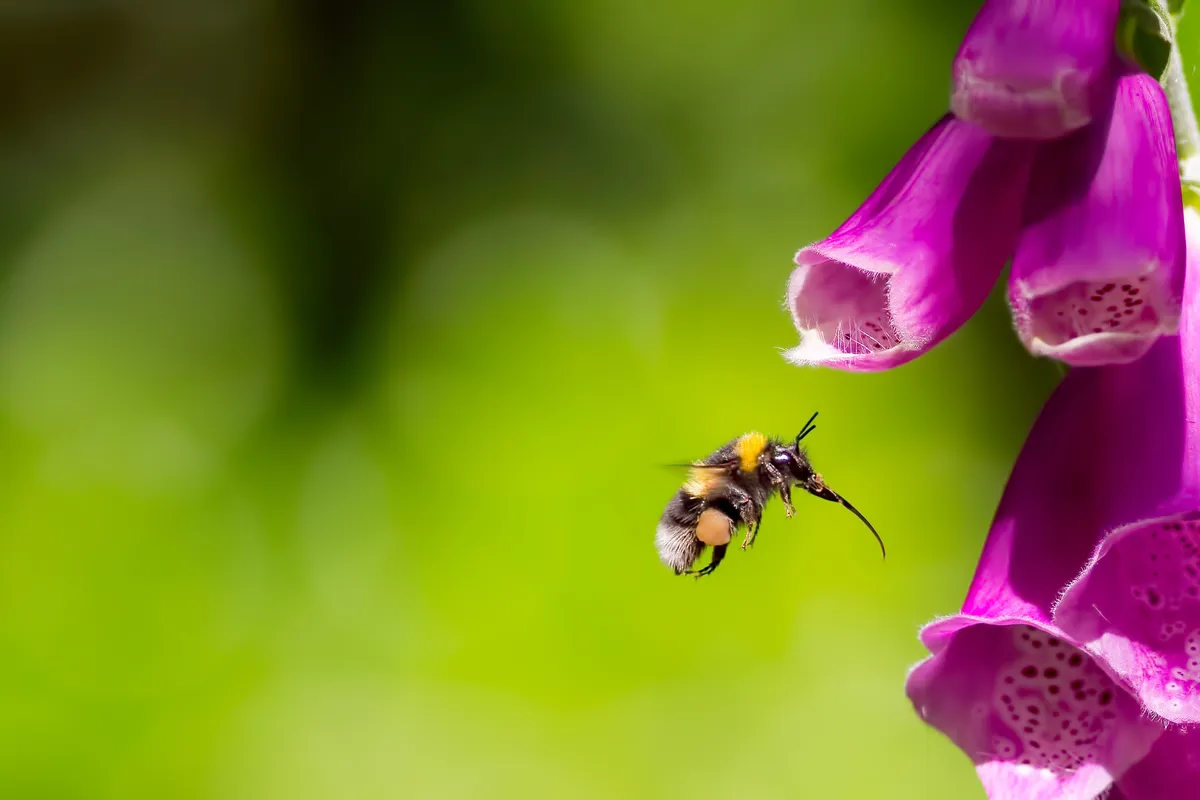
This native wildflower is a classic cottage garden plant with deep pink-purple tubular flowers, which bloom between May and July and bear spots on the inner side of the petals. There are various cultivars available in a wide range of colours, including pink, white and red.. It is a biennial plant, and self-seeds quickly in a garden. It grows up to 1.5m in height, and can grow in a variety of shady or sunny positions. Whilst foxglove has medicinal uses, it is very toxic to humans and animals and can lead to death.
Common lungwort (Pulmonaria officinalis)
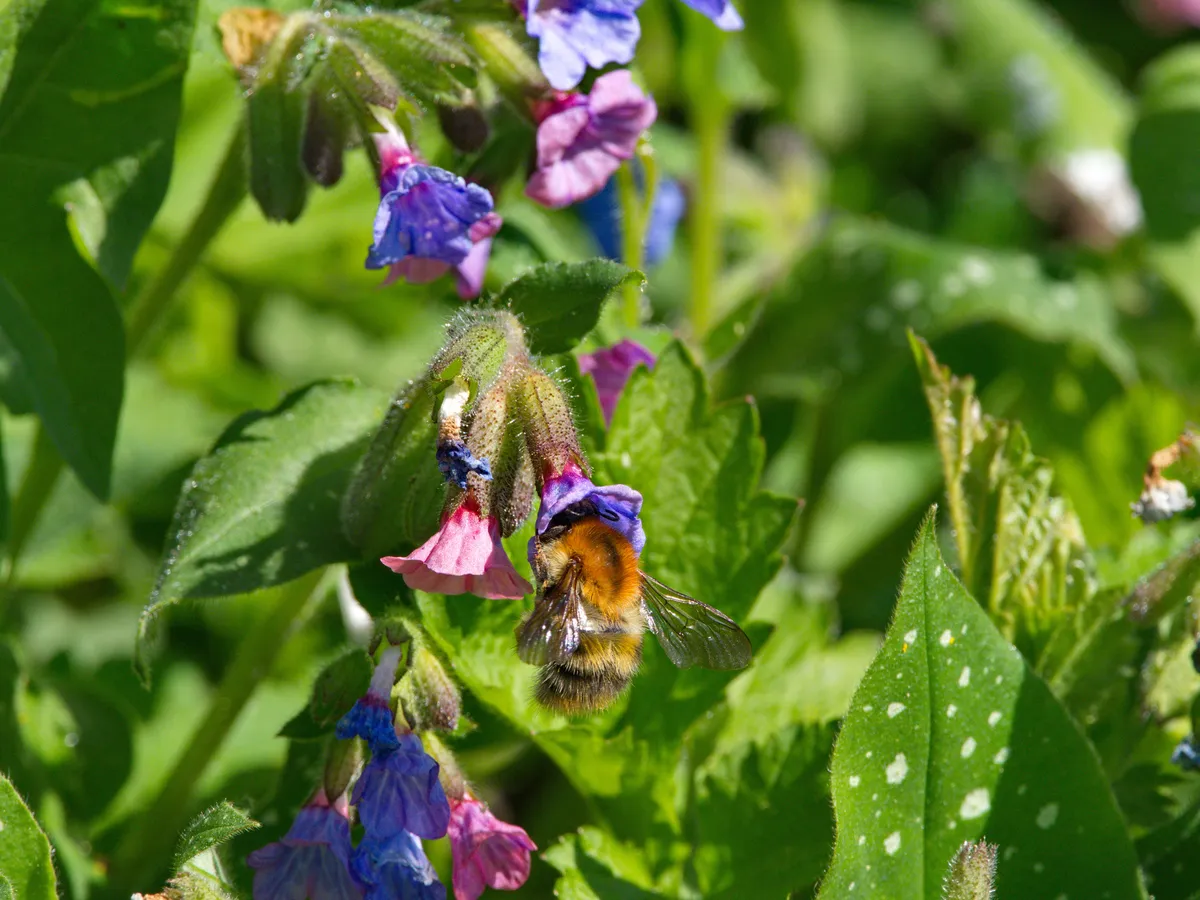
A flowering plant native to the UK, common lungwort is a semi-evergreen perennial species with blue, pink or white flowers. The leaves feel rough with hairs covering them, and have silver-spots on them. It flowers in spring, with the five petals of the flowers starting off pink and changing to blue. It's also known by a variety of alternative names such as Bethlehem sage, Jerusalem cowslip, and soldiers and sailors.
Common comfrey (Symphytum officinale)
- Buy seeds now from Chiltern Seeds
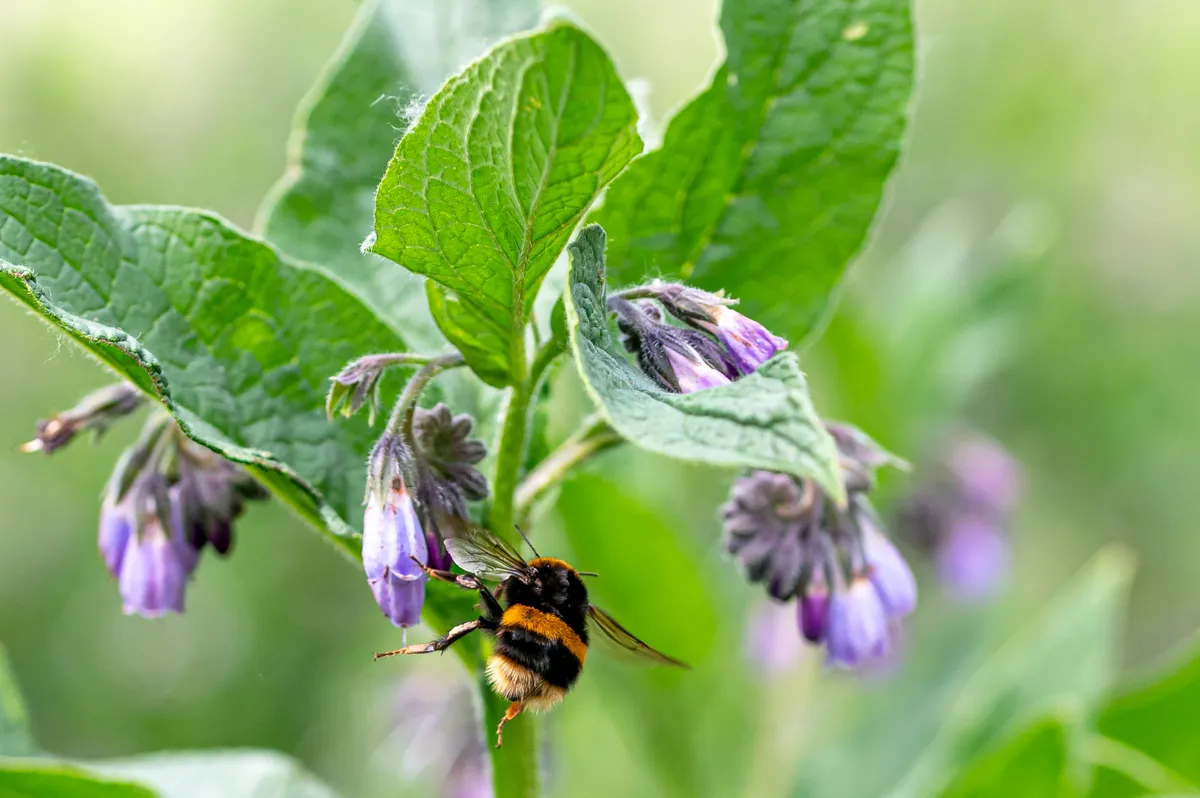
A bumblebee flying to comfrey flowers. © Andi Edwards/GettyNative to the UK, common comfrey is a perennial plant with bell-shaped flowers in purple, pink or cream. Comfrey is well-known amongst keen gardeners as its leaves can be used to make a liquid fertiliser. It can also be used to make a soothing ointment.
Mahonia
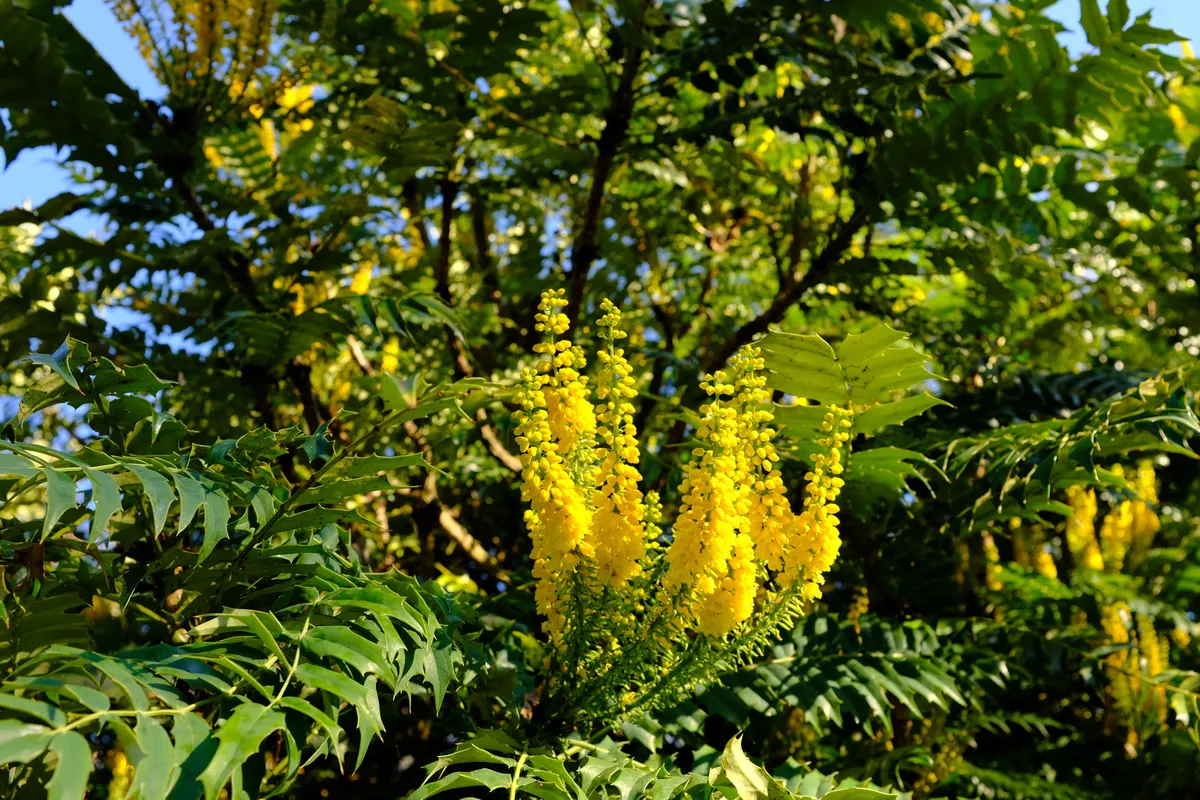
These tough evergreen shrubs, known as Oregon grape, come in a range of varieties, including ‘Charity’, ‘Winter Sun’ and ‘Apollo’. Mahonia produces bright yellow flowers on spikes or clusters between winter and early spring, which are ideal for any early-emerging bumblebees in need of nectar.
Catmint (Nepeta)
- Buy seeds now from Chiltern Seeds
- Buy plants now from Crocus, The RHS

Well-known among cat owners as the source of catnip, catmint's blue-purple flowers are attractive to bees. It flowers from late May to late summer. If you have a cat, or there are cats in the neighbourhood, you may find that it gets eaten and needs protection.
Viper's bugloss (Echium vulgare)
- Buy seeds now from Chiltern Seeds, Crocus, Plantlife, The RHS

A biennial wildflower with vibrant purple flowers on upright steams. It can grow up to 75cm in height, and grows best in full sun. It's attractive to a range of pollinators, including bumblebees, honeybees, butterflies and moths.
Lavender (Lavandula)
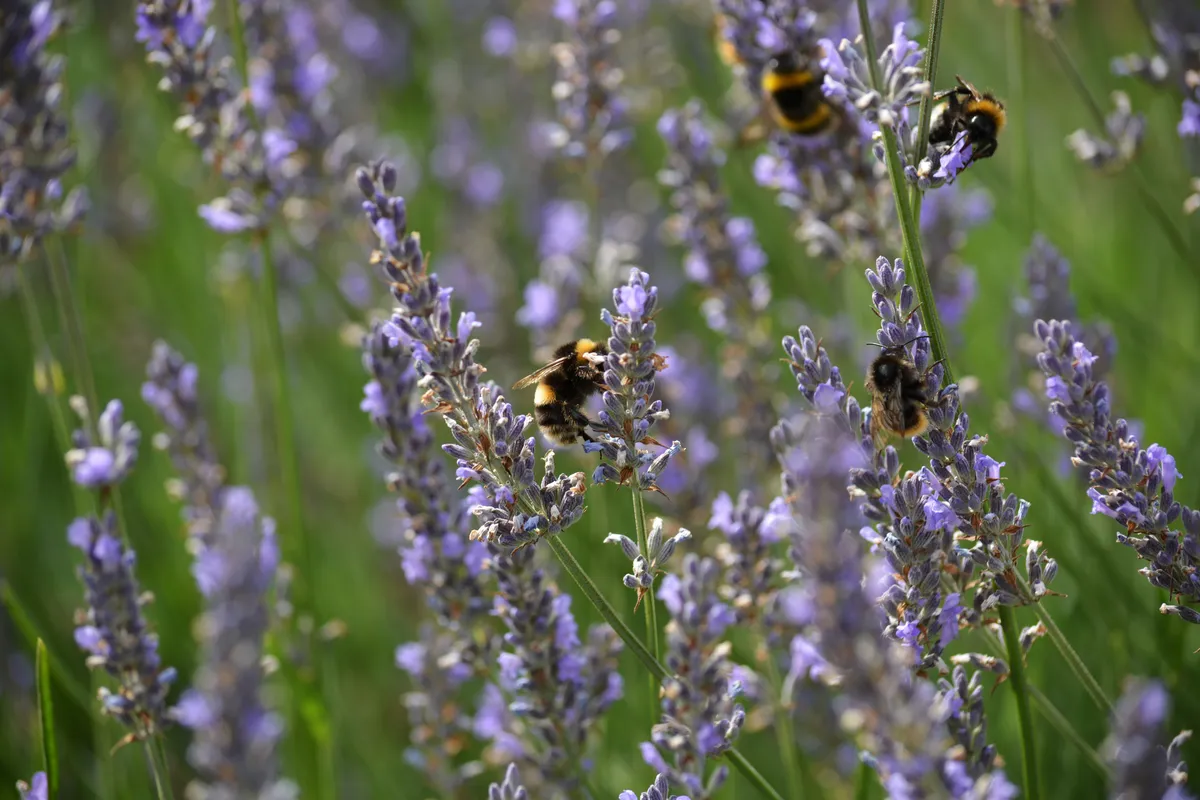
The mauve flowers of lavender bloom between July and August and attract a range of pollinators, including bumblebees, honeybees, moths and butterflies. If you've got plenty, you might want to dry some flowers and try making lavender oil.
Rosemary (Salvia rosmarinus)
- Buy seeds now from Chiltern Seeds
- Buy plants now from Crocus, The RHS
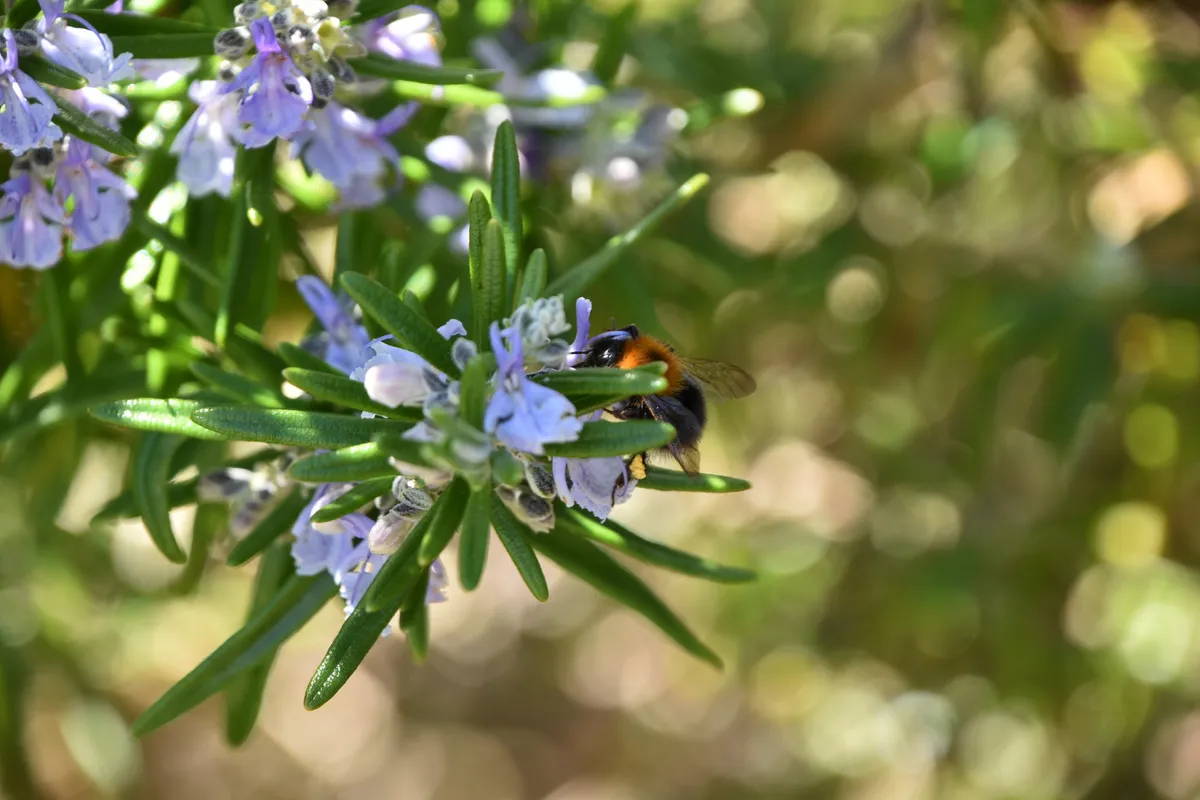
A classic herb plant for the garden, rosemary is an evergreen shrub which flowers between April and May. It is quite hard to grow from seed with a low germination rate and slow growth, so is usually propagated by taking cuttings. There are different varieties available, with some bearing pink flowers. As well as being used as flavouring in cooking, rosemary can be used to create a herb-infused oil.
Borage (Borago officinalis)
- Buy seeds now from Chiltern Seeds, Crocus, The RHS
- Buy plants now from Crocus, The RHS

Also known as bugloss and starflower, borage originates from the Mediterranean. It has star-shaped blue flowers, which bloom between early summer and autumn. It is a popular plant with bees, and is also an edible herb for humans. Its leaves can be used in salads and salad dressings or added to soups (such as this borage leaf, pea and garden mint soup), and the leaves can be used an attractive garnish. The leaves are hairy, and can affect the skin of people with sensitive skin.
Red clover (Trifolium pratense)
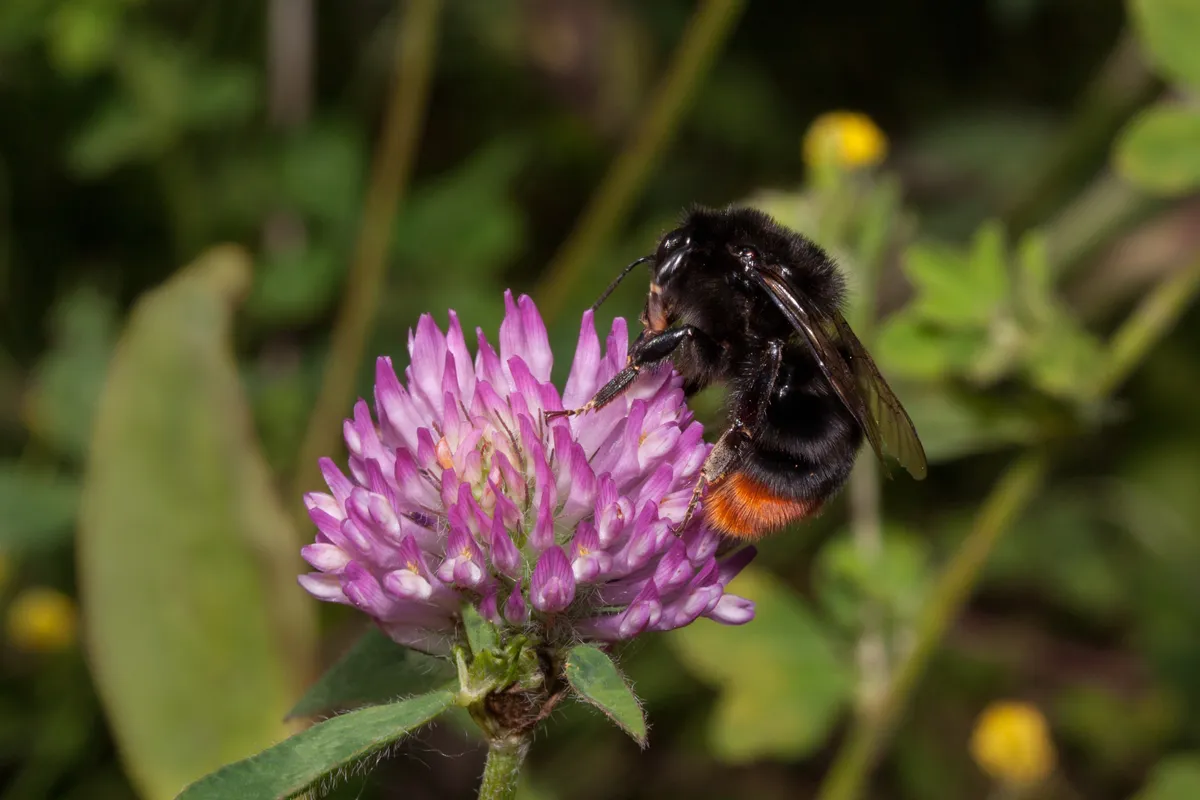
A native perennial wildflower, red clover is a common plant which has very pretty pink flowers in a rounded head, which are attractive to bees. The flowers bloom between May and October. Like other clovers, it has the trefoil leaves, with three green leaflets. It can often be found growing in grasslands and wildflower meadows, and is a frequent addition to seedball mixes for pollinators. Like peas and beans, it belongs to the legume family of plants. It is able to fix nitrogen in the soil, and as such, is often used as a green manure. It is also often used as fodder for livestock.
